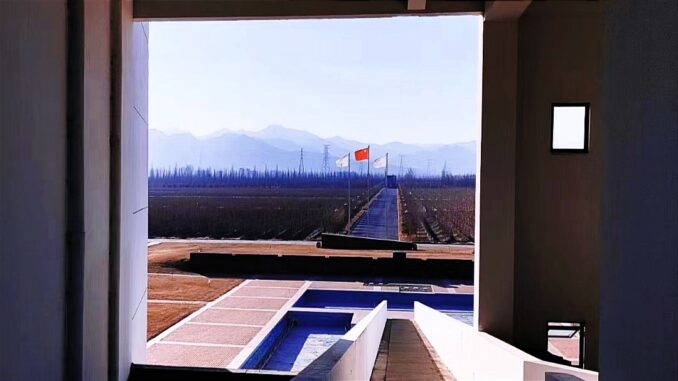
[A version of this post appeared in Grape Wall newsletter. Sign up here free.]
Boozy official dinners and detained booze importers. ‘Ping pong diplomacy’ between a winemaker and a wine critic. The first million-point bottle.
Add a Beijing wedding. A Taiwanese billionaire. A Swedish connection. And one global pandemic.
Plus, winery visits with authors, entrepreneurs and consumers. And above all, the rise of fine wine in China.
Many stories come to mind when I think of Domaine Franco Chinois aka DFC, now celebrating 25 years in Huailai County just outside Beijing.
DFC began as a high-profile China-France project in the late 1990s—Sino-French Demonstration Vineyard—with land and labor from the former party blended with vines and knowhow from the latter. And with a mission of discovering which of the dozen-plus imported grape varieties performed best.
Billionaire Cher Wang bought the project in 2010, paired it with a second project she set up next door, named Canaan, and finally—finally!—commercial wine sales began in 2019 after a dozen-plus years of consulting from top local and overseas experts, plus investment in a vast and shiny winery with cutting-edge equipment.
It’s a story of big ambition, big money, big egos and big wine.
No doubt, others can provide deeper histories of DFC—I use the plural of history as, for example, I have heard multiple explanations of how Marselan, now one of China’s leading grapes, ended up here.
This post gives ten of my own anecdotes about a winery crucial to China’s wine industry. I first tried DFC wine at Beijing Hilton Hotel in 2005 and 2006, and first visited in 2006 or 2007 with professor Ma Huiqin, although only to the vineyard to check the pruning. Here are ten more stories.
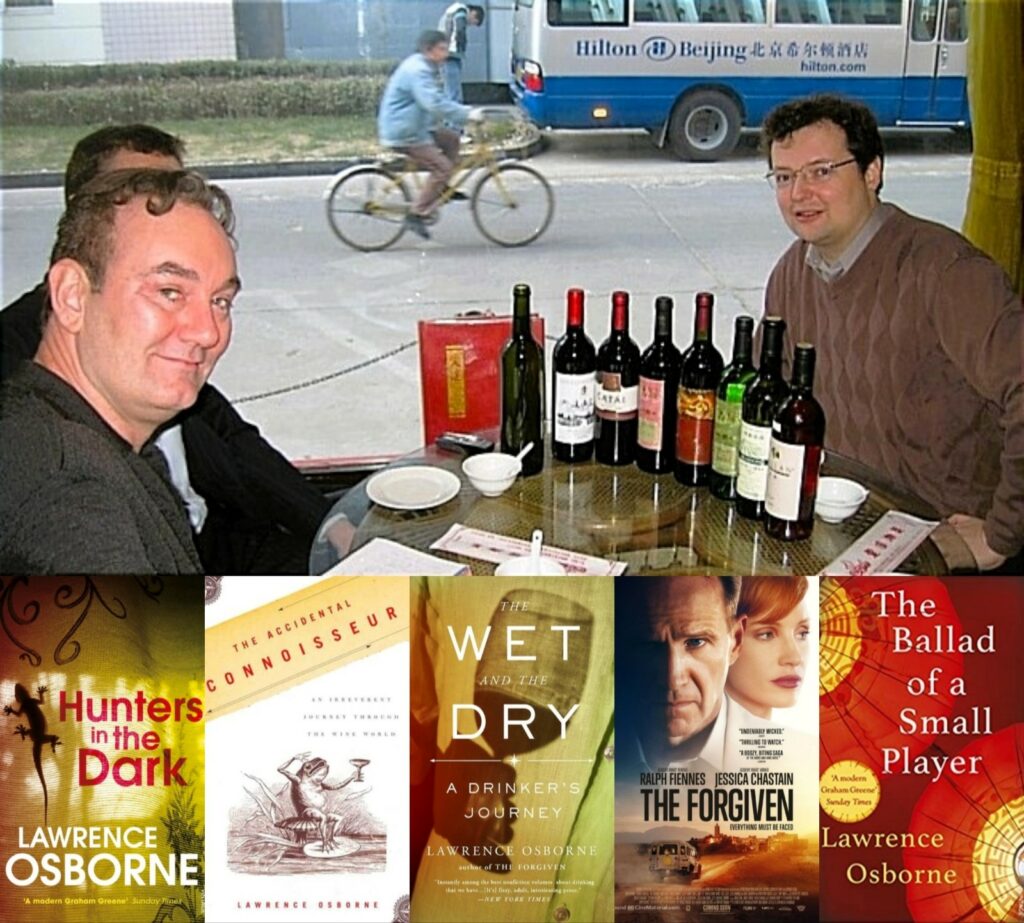
2008 JANUARY
The Cold & The Dry
Writer Lawrence Osborne was between the books The Accidental Connoisseur and The Wet and The Dry: A Drinker’s Journey when he flew in from New York for a magazine story just ahead of the Beijing Summer Olympics.
We corresponded before his trip and then met at the Beijing Hilton. Expectations felt low during a dreary 90-minute drive to DFC during an era known for smoggy skies rather than today’s relatively clean ones. That sentiment was not improved by the barren fields that awaited. Vines at DFC are buried as protection from two winter threats: The Cold and The Dry.
Winemaker Li Demei gave us a quick chilly vineyard tour, then a tasting inside, with wine writer Winnie Wang also present. We tried wines from the 2005, 2006 and 2007 vintages: three each of Cabernet Sauvignon, Marselan and Chardonnay, plus Cabernet Franc, a Viognier-Riesling and a Petit Manseng.
These wines showed so much more life than those fields. Osborne noted that the smooth subtle Viognier-Riesling, with light ripe pear and floral aromas, was better than an Australian Viognier-Pinot Gris we had the night before. The sweet viscous Petit Manseng shone, with its smoky tea aromas and savory edge.
We tried more DFC Chardonnay later that week as I arranged a tasting of nine local wines for Osborne, James Fallows, then based in Beijing for the Atlantic Monthly, and ex-ASC Fine Wines marketing director Campbell Thompson. DFC’s Chardonnay and Grace Vineyard’s Cabernet Sauvignon 2005 fared best
(Osborne has since published novels like Beautiful Animals, The Forgiven and The Ballad of a Small Player, that last now being filmed and starring Colin Farrell.)
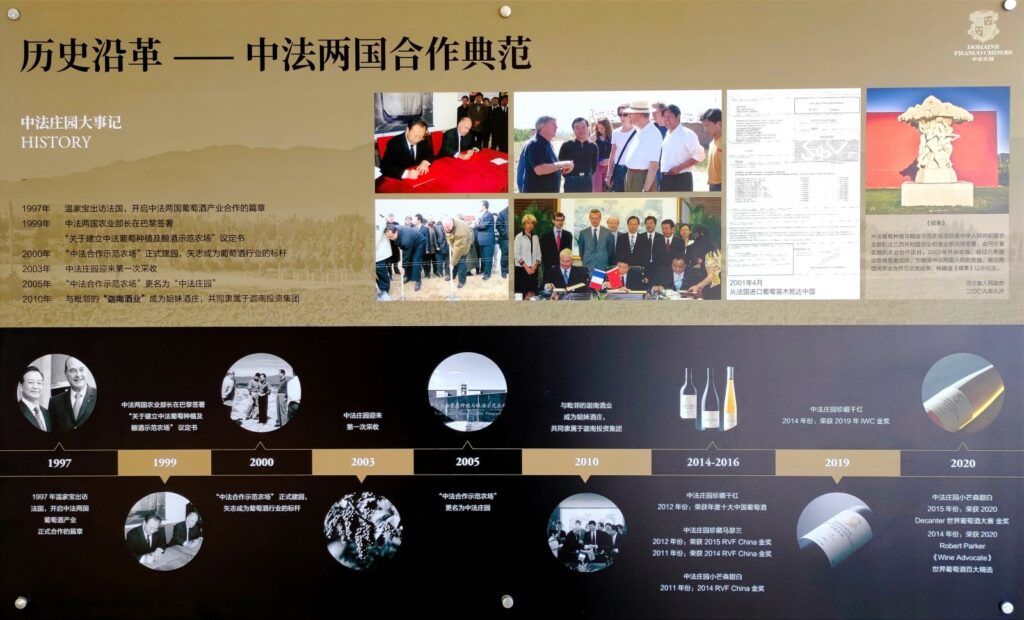
2008
Due Diligence & Detention
DFC had numerous suitors as it prepared to privatize, including massive local producer COFCO, maker of GreatWall, and importer and distributor ASC Fine Wines.
During the leadup to Beijing’s 2008 Summer Olympics, ASC got caught in a Customs investigation into imported wine value declarations, which saw co-founder Don St Pierre, Jr detained in March for nearly a month.
People from other importers were also detained, including East Meets West, but none had the profile of ASC, especially as the other co-founder, Don St Pierre, Sr was crucial in establishing Beijing Jeep in the 1980s. Not surprisingly rumors were flying in wine circles, with talk that the investigation was somehow linked to the DFC sale, although one wonders why, then, so many other importers were also involved.
In April, the case was resolved; in Jine, ASC hosted a Robert Parker, Jr wine dinner on the Great Wall in June; then all eyes were on the Olympics in August, dubbed China’s “coming out party” by some media.
And DFC? Businesswoman Cher Wang, Taiwan’s richest woman and known for companies HTC and VIA Technologies, ultimately bought the operation.
While ASC did not end up getting DFC, there is still a link between the two: then-vice president Richard Li lived at the winery for weeks back then while doing due diligence for a possible purchase. In 2019, he left ASC altogether after a 17-year stint to become president of DFC and Canaan.
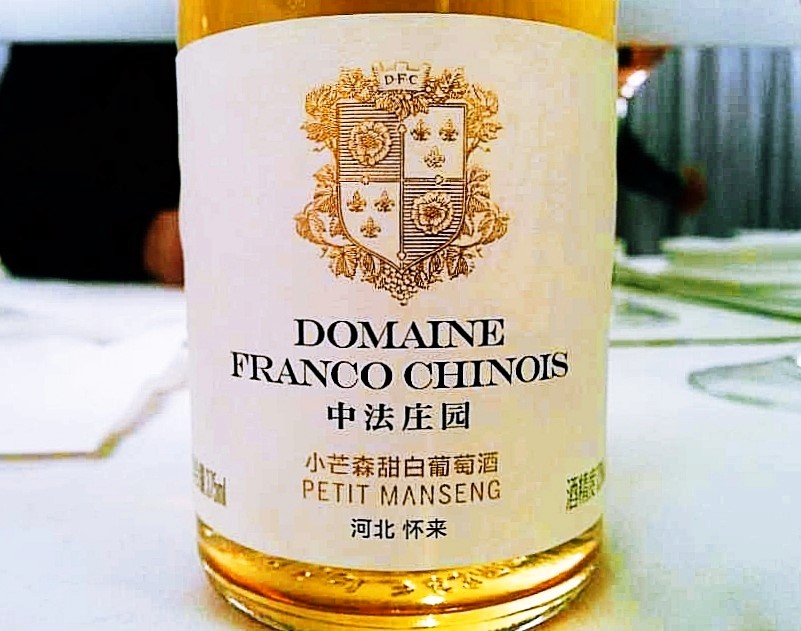
2009 JULY
Sweet Vows
When you are best man at the Beijing wedding of a Chinese and an Australian, it makes sense to feature wines from both nations, yes?
While the Australian wines were no problem, given the groom was an aficionado, something local was in order. Buying DFC wine on the market was a no-go as we would wait ten more years—ten!—before they were commercially available.
Thus, I had to turn to guanxi, those personal relations that make so much of China function. I procured some of that delectable late-harvest Petit Manseng through a connection at the winery, poured it for the head table at the wedding and ensured harmonious China-Australia relations until, well, I guess those tariffs arrived in 2020.
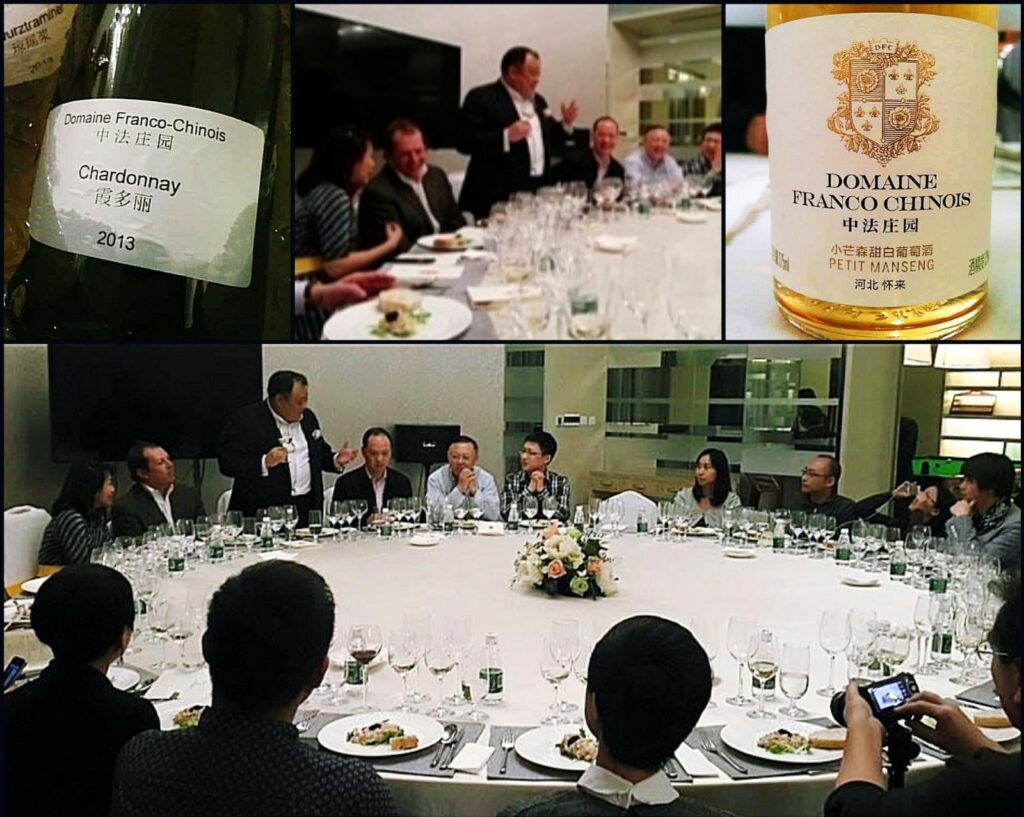
2015 APRIL
DFC in the PRC
Were DFC wines finally going on the market!? That was my hope when attending a tasting led by then-president, Tom Hsu, with commentary by winemaker Zhao Desheng.
Along with enjoying DFC wine, many got their first taste from Canaan and its three vineyards planted at elevations spanning 500 meters in Huailai County.
The DFC wines showed well.
The Bordeaux Blend had ripe blackberry aromas, dark plum and milk chocolate flavors, with ample oak. The Marselan 2011 started dusty, with cherry, chocolate and underlying funky and meaty smells, then—after it breathed—opened up as juicy, chewy and relatively rich with fresh red berries.
And the two late-harvest Petit Mansengs hit the spot: the copper-colored 2009 with aromas of honey, apricot and a touch of marijuana, and the medium-gold 2011, with mild honey, citrus and light grass aromas.
Ready for market!
“Word is some of these wines will be available this year,” I wrote with hope in my heart that would soon be dashed.
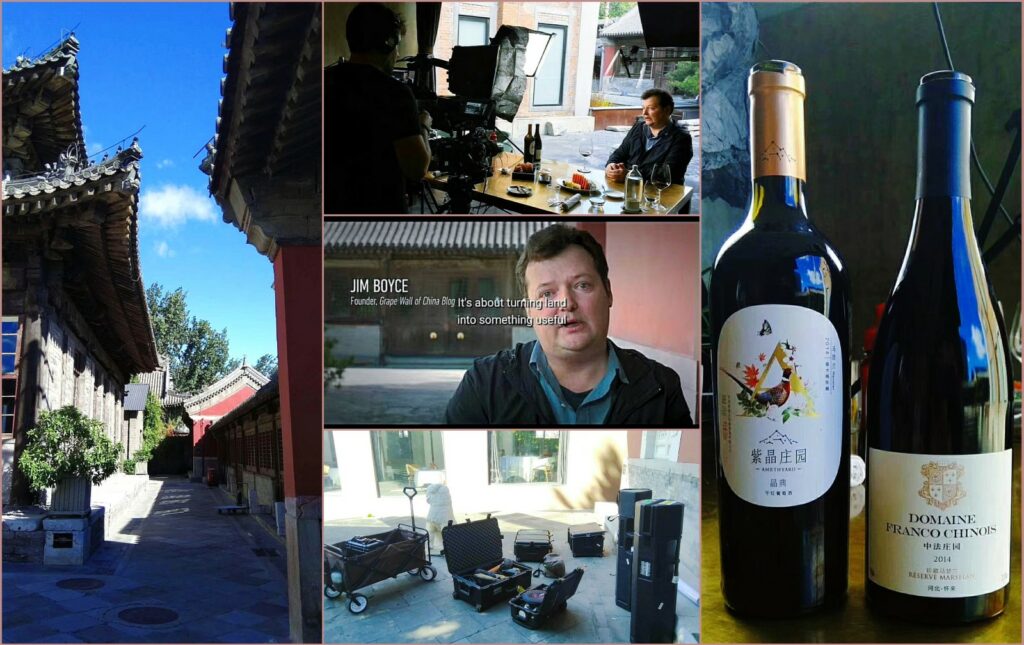
2018 SEPTEMBER
A ‘Rotten’ Day
I usually organize interviews for others but ended up in the chair for the Netflix episode ‘Reign of Terroir‘, part of the ‘Rotten‘ series.
A New York-based production team contacted me in early August and I helped them with Beijing site logistics and suggesting other interviewees. The team arrived in late September with more camera and video equipment than I’ve ever seen.
Temple Restaurant Beijing head Ignace Lecleir gave us a private dining room, with the temple grounds visible through the windows, though the “few hours” I expected for the interviews of two people turned into six.
So what’s the DFC connection? I launched World Marselan Day earlier that year, so I brought a pair of bottles, from DFC and Amethyst, hoping to get them air time!
I enjoyed sipping this while waiting out the soundchecks, then sharing them with the production crew at lunch: DFC and Amethyst Marselan were the first high-quality Chinese wines these New Yorkers had ever tasted! Not a bad start. As they say, you have to win the market one person at a time.
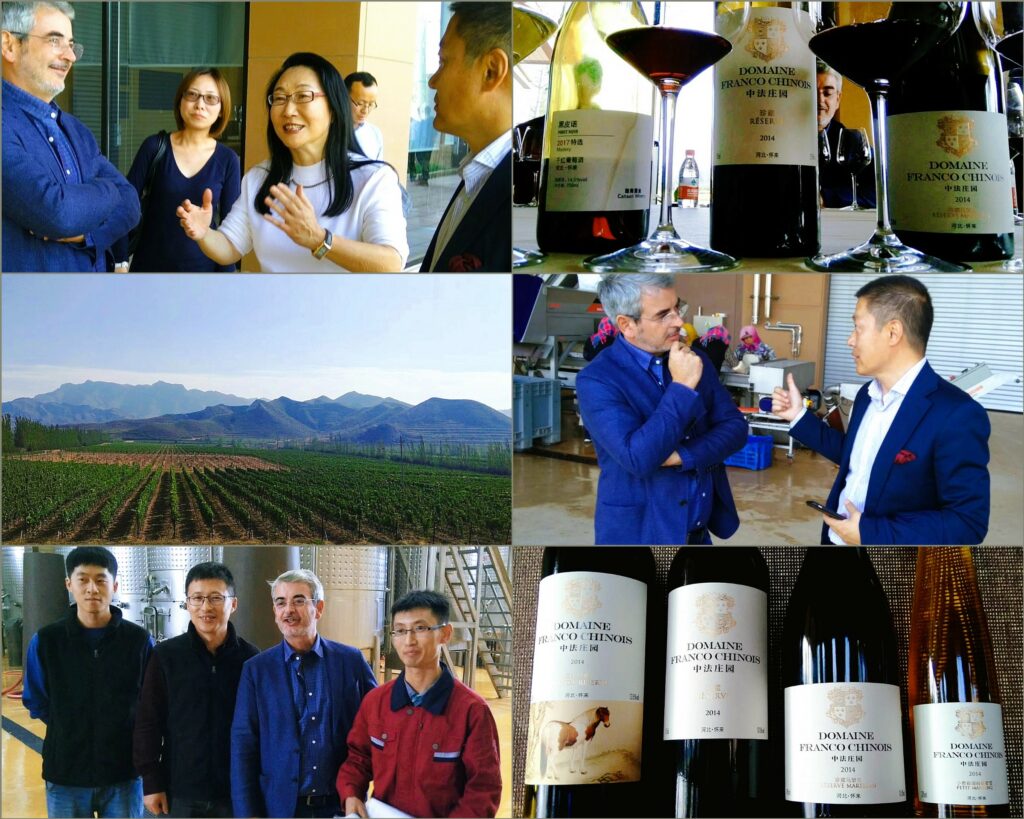
2019 OCTOBER
French Re-Connection
I joined Nicolas Billot-Grima, the first French director at Sino-French, on his first visit back to DFC in over a decade. This came on the heels of a visit to the winery Huadong in Qingdao, where he first worked in the 1980s.
We picked a fortuitous time as owner Cher Wang was actually on site. In fact, we found her drinking Petit Manseng in the barrel room! The entire senior team was on hand, which meant we could talk to Richard Li, Zhao Desheng and others.
Then we did some tasting.
That included DFC’s 2014 red blend—Merlot and Cabernets Franc and Sauvignon—with ripe berry jam, menthol and graphite aromas, and Marselan 2014, which gave our noses a nice workout. Big and vibrant with roses, black cherry, cassis, a touch of mint. A real mouthful, with “chewy” texture.
Most importantly, DFC wines were finally entering the market and would soon be popping up in more and more bars and restaurants.
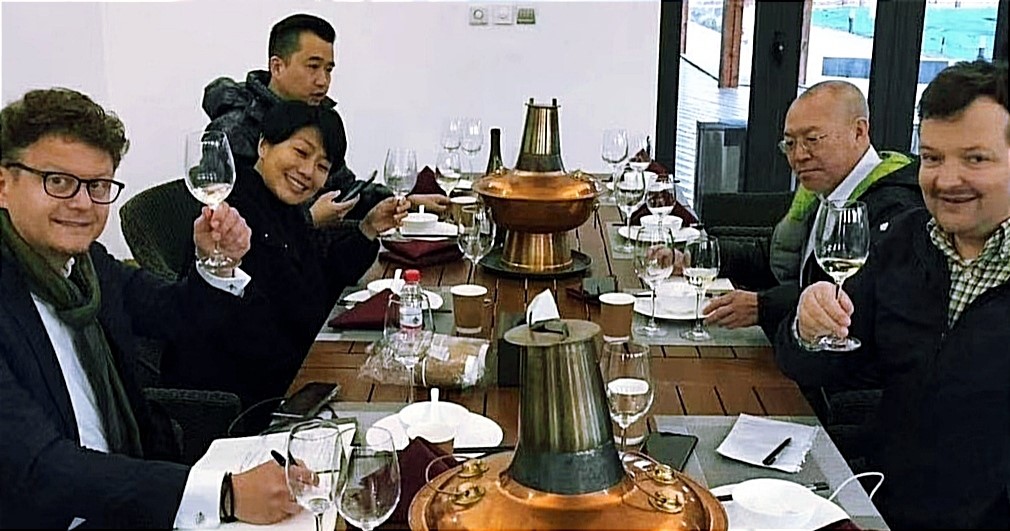
2019 NOVEMBER
Million-Point Wine
I joined a short but sweet trip with a team from Shanxi’s Grace Vineyard, headed by CEO Judy Chan. That made it extra special as both Grace and DFC wines were among the very best when I moved to China.
We had a fun afternoon tasting vintages from 2011 to 2017, followed by a hotpot dinner at the winery. Highlights included the 2011 Marselan from DFC and a 2016 Canaan Pinot Noir that became my first million-point wine—we polished off that bottle during the tasting. Or maybe it was two.
This was also a special time because, as noted, DFC wines were finally entering the market. Although I had spent much of the past decade focused on Ningxia, I’d been asking DFC on a yearly basis when the wines would be available. And now they were.
It seemed appropriate I was tasting them with the team from Grace, a model for the China wine industry: a successful business that long offered good-value wine, from entry-level to premium, that had a diverse portfolio of grape varieties and styles, and that was always tinkering with new projects, all things that DFC / Canaan and other wineries are doing now.
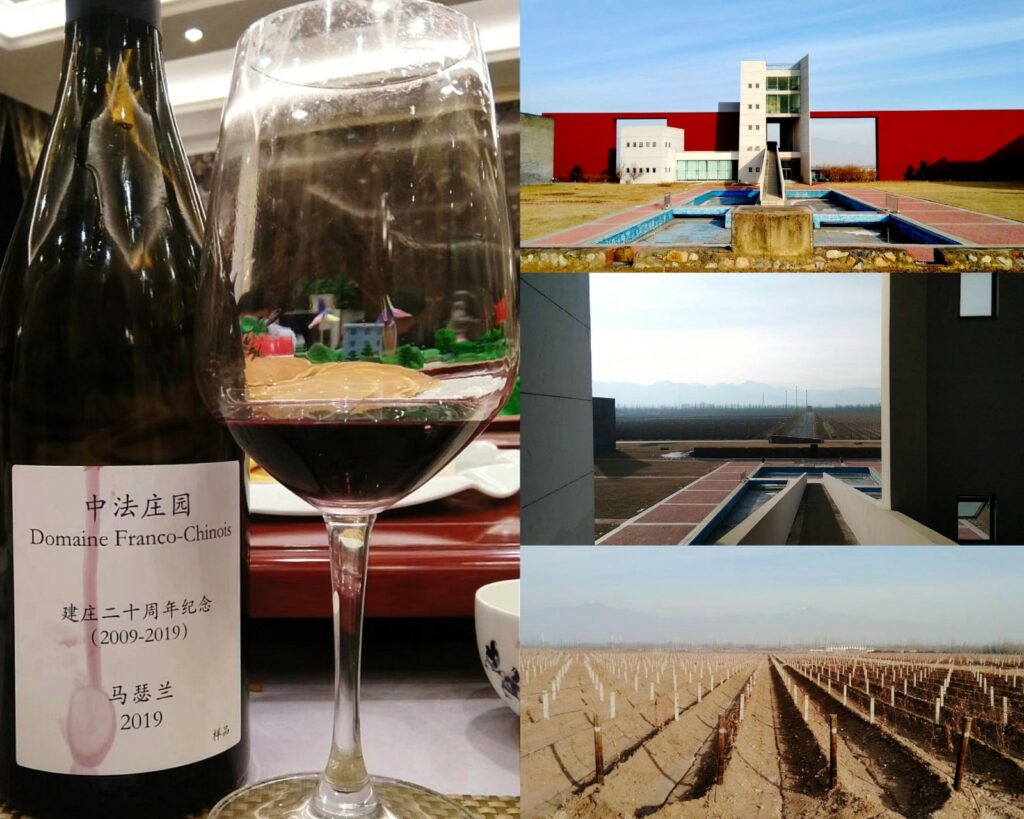
2020 JANUARY
Baby, It’s Cold Inside
Waking in an unheated winery apartment in the middle of winter was not on my itinerary for January 16 but it made for a memorable start to the day.
I had come to Huailai a day earlier on a media tour. Huailai was launching a kind of mall for wine, with something like 20 wineries getting individual shops. Most of the media parked in one shop and waited for the officials to arrive. I walked door to door trying what few bottles were open. It was freezing outside but I was warm and tipsy on Huailai wine although a bit frustrated at the lackluster occasion.
When the rest of the media headed back to Beijing, I stayed behind and ended up at a Chinese New Year dinner for Huailai officials. They seemed surprised to see a foreigner, especially one willing to match their every ganbei (“bottoms up”).
The food was good, notably a donkey meat dish; the wine was good, especially the Marselan; and there were was some blunt talk, which was also good. I won’t go into the details but will note two things.
The table had a centerpiece of a man holding what I thought at first was a bunch of grapes but instead was a bomb. He is a local hero, Dong Cunrui, who ran at an enemy position during the civil war in 1948 and blew up both it and himself. (I heard a comment during dinner that we should be like Dong while promoting Huailai wine but I think that might be going too far.)
The second is that I have a picture of myself as the last person at a table loaded with empty bottles.
The next thing I knew I was waking up in a cold winery bedroom many miles from that dinner. I was hungover. But I was satisfied.
In early January, I had returned to China from holidays with a mission to visit more wineries than ever. Now I had this DFC adventure, plus a trip to Lafite’s Longdai in Shandong a week earlier, already under my belt.
I went outside and stared at the barren fields in the cold—fingers so numb I could barely use my phone. Then the winery’s driver pulled up, shouted “Beijing”, and sped me back to the capital on nearly empty roads. We headed toward the certainty of a coming COVID wave and uncertainty of what it would mean. DFC was the last winery I visited before the pandemic hit in full.
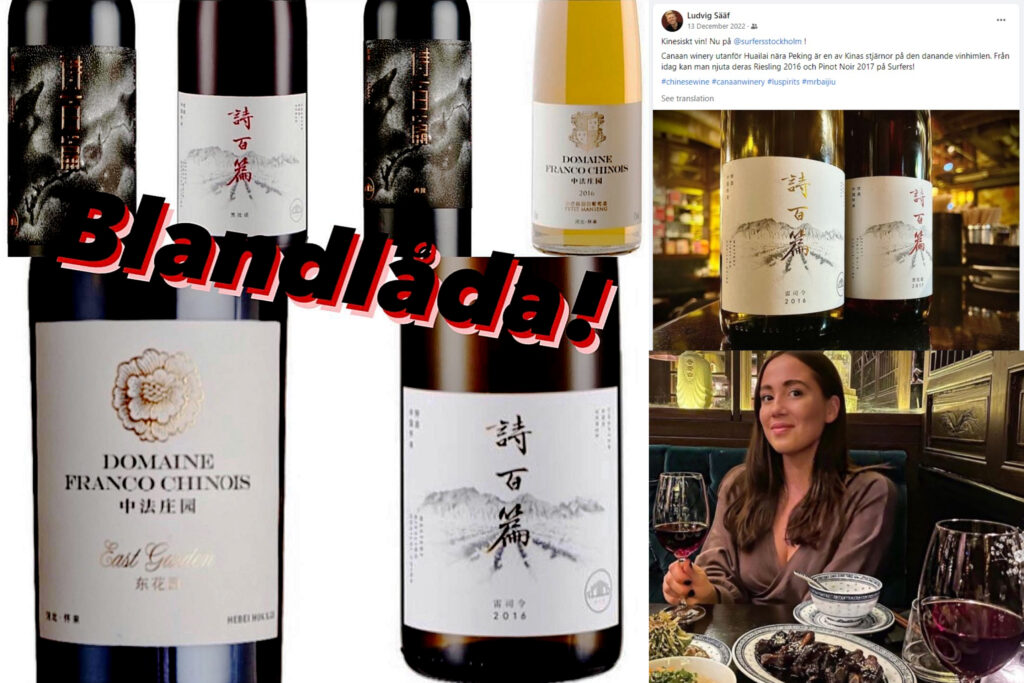
2022 DECEMBER
Wine with a Chance of Meatballs
Nine wines from DFC and Canaan in Sweden?! These were imported by Ludvig Saaf, who I know from my World Baijiu Day project and also handles Shaoxing rice wine, Chinese craft beer and a half-dozen baijiu brands.
“People are really impressed at how good these wines are,” Saaf told me. “It is good that Chinese wines bring something more than just novelty, that they also bring new flavors and styles to the shelf.”
Getting the wine placed in Sweden was a long process, complicated by the pandemic. Saaf contacted me about Chinese wines in April of 2020, I suggested Grace Vineyard and Canaan / DFC, and just over a year later nearly two dozen samples headed to Sweden in a shipment of baijiu.
The process for choosing the wines included a video call with Li, who led an online tasting from Shanghai as Saaf and a group of sommeliers joined from Stockholm and I tuned in from Beijing. Finally, the first group of wines arrived in Stockholm restaurants in December 2022, though I am still waiting to hear which one pairs best with meatballs.
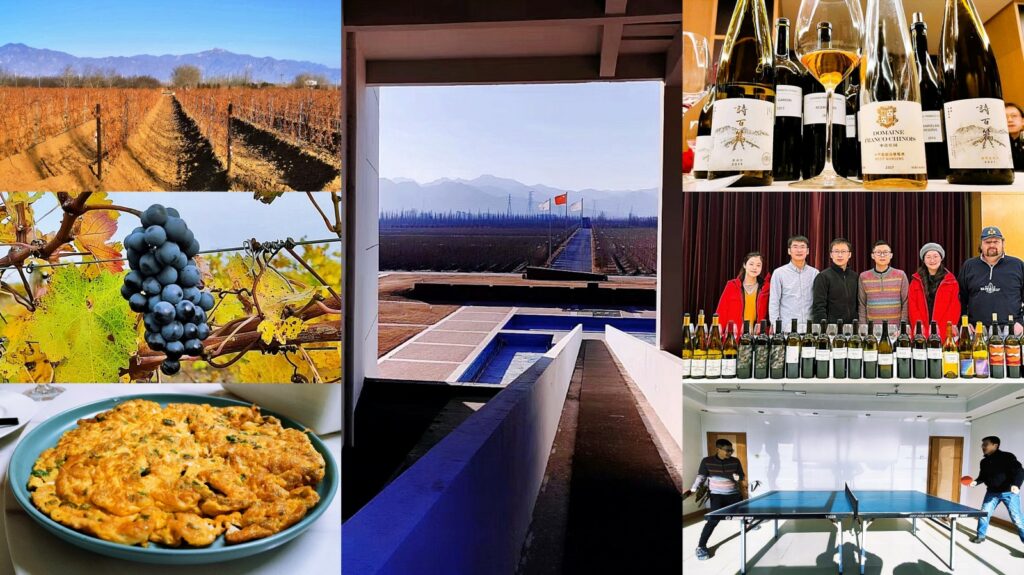
2022 DECEMBER
After The Deluge
When China finally cut back on its heavy COVID rules after nearly three years, the first wineries I visited were DFC and Canaan. I tagged along with Shuai Zekun, who reviews wine from China, Spain and South America for James Suckling, and has emerged as the most reliable critic of local wines in my opinion.
While COVID rules such as daily testing were no more, the pandemic still weighed heavy. I live on a block in central Beijing with a leading bar / restaurant area at one end and a high-profile hospital at the other. My walks took me from people happy they no longer faced restaurant restrictions and mask mandates to a line of hearses picking up victims of a disease still hitting the city hard.
Getting on the road to a winery was a blessing and I felt my blood pressure drop as we drove toward the mountains and Huailai County, passing the Great Wall on the way while DJ Shuai played Latin tunes.
Once there, we settled in for a long comprehensive tasting: 39 wines with Zhao Desheng and his team. Bordeaux-style reds. Riesling with telltale diesel aromas. Syrah and Merlot and Tempranillo and Marselan. Even a few skin-contact wines made with the likes of Muller-Thurgau and Ehrenfelser. Both the range of wines and the overall quality were impressive.
We stayed overnight so our visit included several meals in DFC’s cafeteria, from simple dishes at breakfast—incredibly fresh eggs!—to fancier fare at dinner, when we shared bottles we brought from Beijing. Shuai kept us caffeinated as he brought his own coffee for pour-overs.
As opposed to Canaan, which is sleek and cavernous and modern and geared for visitors, DFC is earthier and homier, with basketball hoops outside and games rooms inside, with staff apartments, and with that kitchen whipping up delicious dishes—I had some tantalizing corn—and everyone having a do-your-own-dishes mentality. (Each team member has a cubby hole, labeled with a grape name, for storing their dishes and utensils.)
Plus, a dedicated table tennis room. Fueled by a hearty lunch, Zhao and Shuai engaged in a hotly contested “ping pong diplomacy” match before we headed back to Beijing.
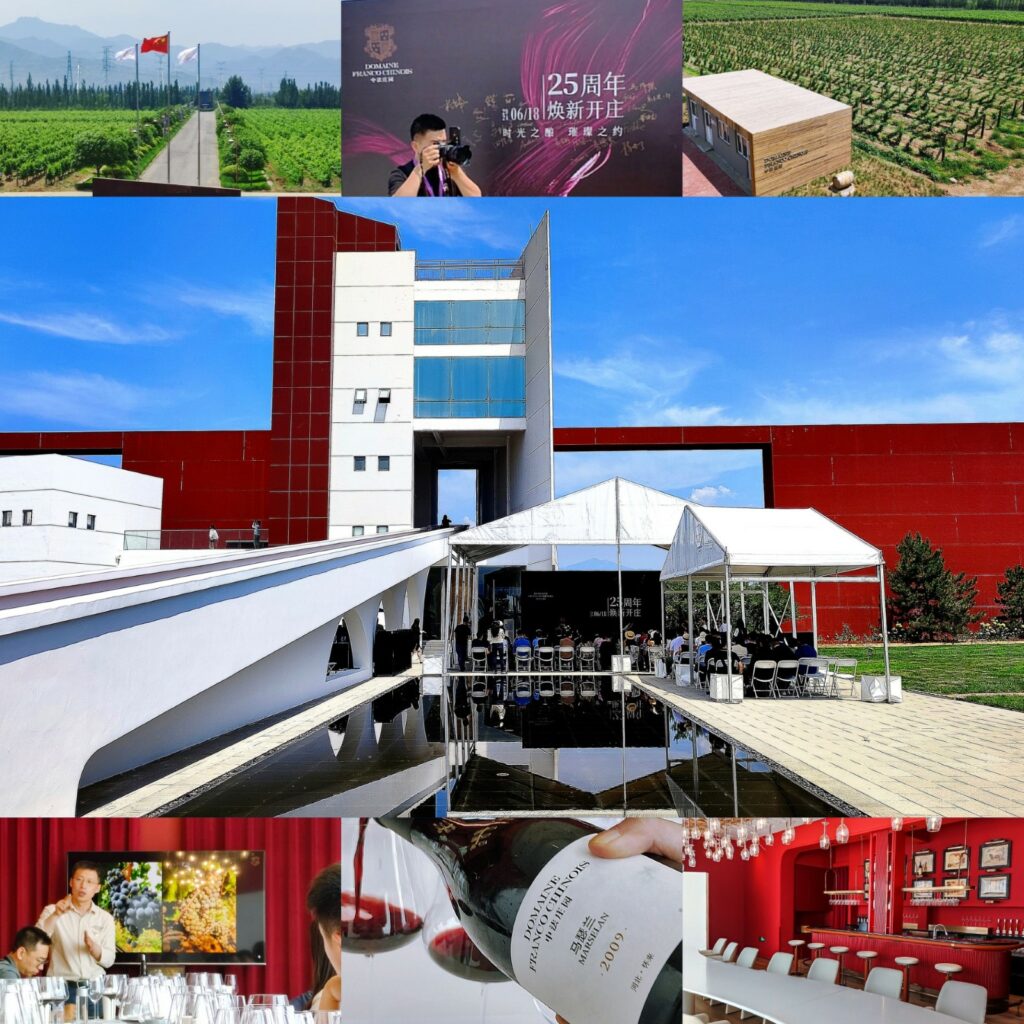
JUNE 2024
Twenty-Five
Safe. That is a good way to describe the 25th anniversary celebration at DFC on a scorching June day.
The crowd was modest in size, I guess around100 people, with a blend of veteran trade people, young KOLs and, given the DFC origin story, a strategic selection of Chinese and French guests.
There were the expected speeches. A garden party-style lunch with a small band. Tours of DFC, its new wine bar / tasting room, and sibling Canaan next door. And a guided tasting of five wines. Everything was under control.
It was, indeed, fun to taste Marselan from 2009 and 2019, but beyond all the set pieces, I took home other memories from simply walking around the place on my own.
Like the four-cheese pizza during the garden party. It was delicious. How did it get there? Was it freshly delivered, I asked one of the caterers. No, it was made here, he said. What!?
And the ten-minute stroll from DFC to Canaan. I made it alone as the rest of our party took the bus. It was too hot, they said. But I relished the chance to walk on grass, near the winery, to feel ground sink beneath my feet, to listen to buzzing insects and chirpings birds and gaze at the mountains beyond the vineyards.
Then, in those quiet cavernous confines of Canaan, I found a trio of wines were being poured, including… my million-point Pinot Noir!
That cool tipple was refreshing on a sweaty summer day. As I enjoyed it, the staff proudly showed me a bottle, with a quirky label, only available for sale at Canaan. Interesting.
There was a second pour of Pinot for my return walk to DFC. I took a shortcut this time and that led me to—surprise, surprise—a mobile pizza oven!
Naples on wheels. The four-cheese mystery was solved.
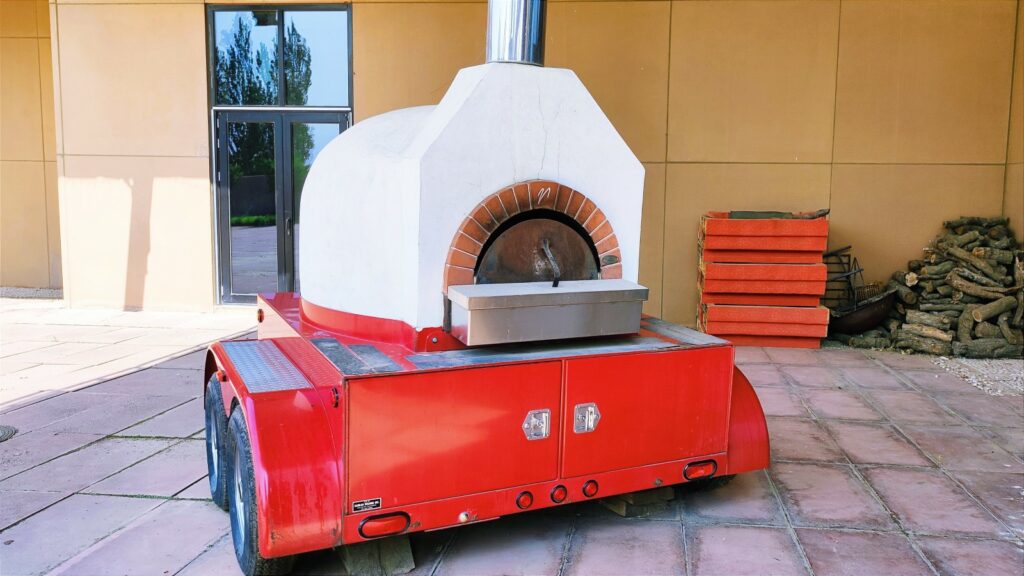
And finally I was back at DFC. It really was blazing hot, the flip side of that bitterly cold January morning more than four years ago. But I had a Pinot Noir in one hand, would soon have a Marselan in the other, and was thinking that some day I would try a 2024 DFC and think of this day. They say eat, drink and be merry, and I had done all three on a Tuesday afternoon in Huailai.
I can think of lots of other DFC anecdotes. The time I stayed overnight, woke to sounds outside my room after midnight and peered through the window to see lights dancing in the vineyards in the distance. No alien invasion. It was a night harvest in progress.
The time I visited when some of the consultants from the U.S. were on site. They shared lots of stories over food and wine, including planting hybrid grapes in Huailai that are more commonly found in Minnesota.
The time I visited with Simone Incontro from Wine to Asia and heard talk about a “Chinese Marselan Day.” (Because what we need is competing days dedicated to a grape that few consumers know in a struggling wine market instead of, maybe just maybe, working together? Yes, I was annoyed by this suggestion.)
Maybe that’s a good place to finish, given DFC is the starting point for Marselan, which has spread to vineyards spanning more 3000 km across China. And is one of my links to the winery although, for my money, that late-harvest Petit Manseng ranks among my top-ten all-time wines. It’s nice to be able to debate over which of those is best. And to finally have them on the market.
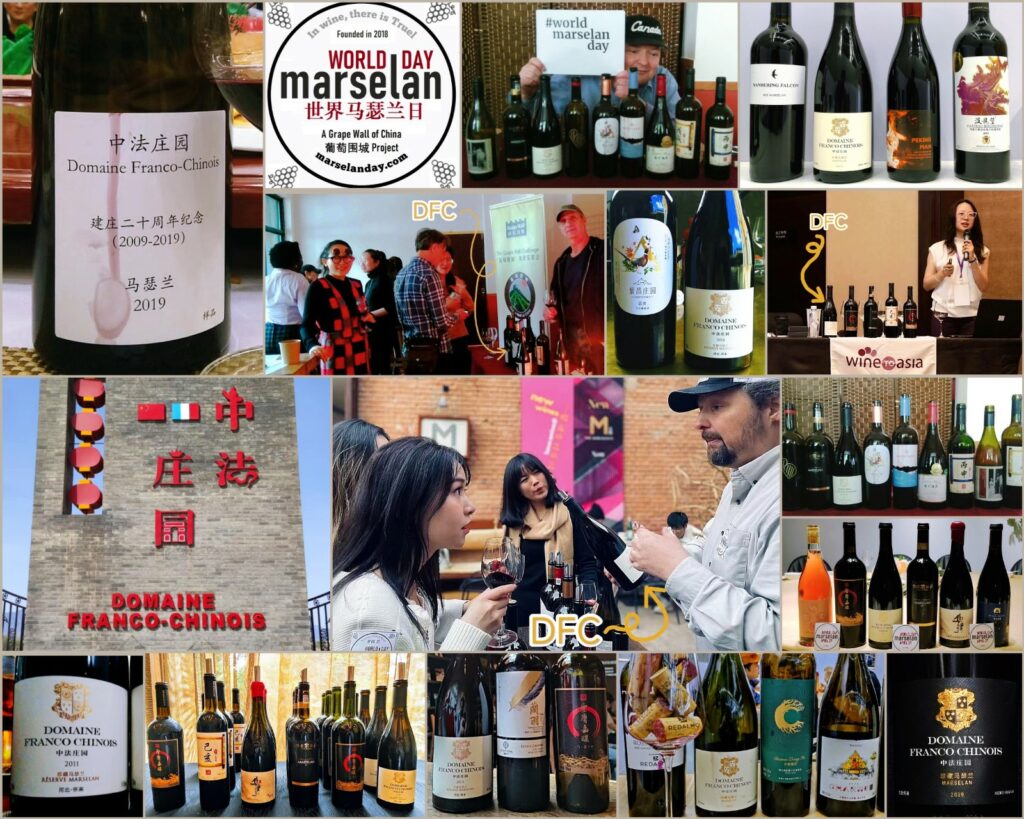
Grape Wall has no sponsors of advertisers: if you find the content and projects like World Marselan Day worthwhile, please help cover the costs via PayPal, WeChat or Alipay.
Sign up for the free Grape Wall newsletter here. Follow Grape Wall on LinkedIn, Instagram, Facebook and Twitter. And contact Grape Wall via grapewallofchina (at) gmail.com.

Leave a Reply
You must be logged in to post a comment.